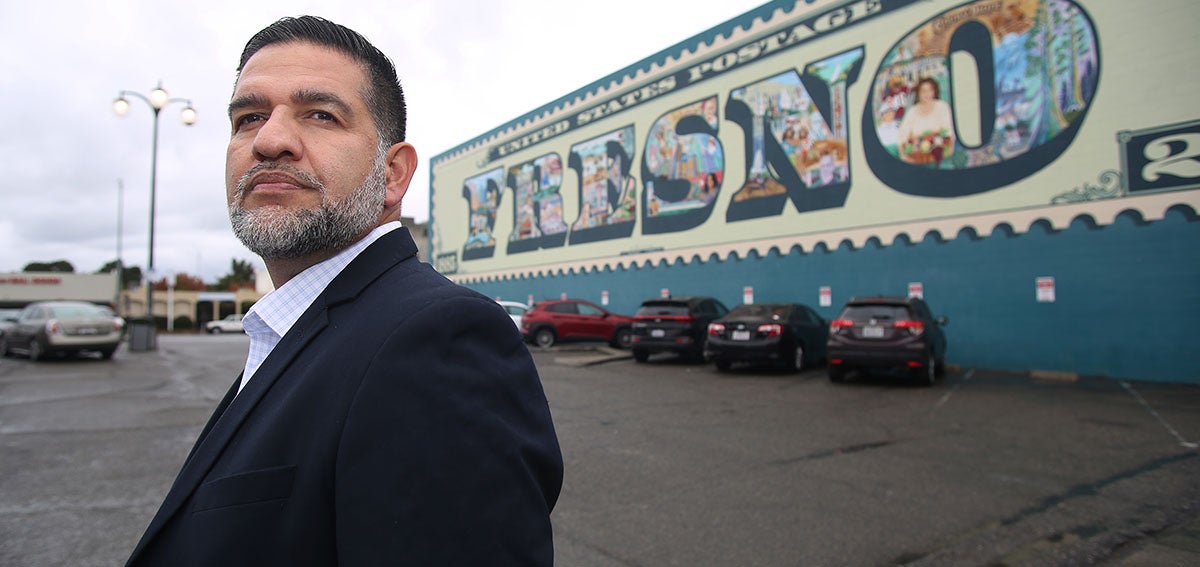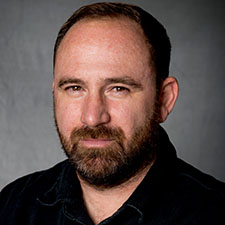
In the 25 years Joe Prado has worked for Fresno County’s Department of Public Health, the methods for gathering and sharing health data across organizations haven’t changed much. The fax machine and the telephone still rule.
“There’s still paper that is faxed from the hospital to one of our departments to report a 5150 [involuntary psychiatric hold],” said Prado, the department’s assistant director.
Efforts are underway in Fresno to digitize more health data, said Prado, but he admits exchanging that data once it is collected still requires sharing it in a telephone call. The main problem, Prado said, is that the county lacks an essential component for sharing data in real time: interoperability — the technological ability to exchange data seamlessly among different types of computer systems and software.
Fresno isn’t the only county to struggle with real-time health data sharing and interoperability — it’s a big problem across California that the state is trying to fix. On July 27, 2021, Governor Gavin Newsom signed into law AB 133, which included language requiring the creation of a statewide Data Exchange Framework, an ambitious effort to expand access and the sharing of health information across the antiquated and siloed medical, behavioral health, and social services systems.
Unprecedented Scale
Integrating medical and human services data and making it accessible across systems and providers has never been done before on a large scale in California. And the state isn’t wasting time getting it done, mandating that nearly all health care entities begin to share data by 2024.
An effective data exchange would have a major impact on patient outcomes. For example, a person with schizophrenia and diabetes and also experiencing housing instability, who may be seen by multiple providers, might have an incident leading to admission to a mental health facility. Robust data exchange would ensure that all providers caring for the person could coordinate their management and responses in ways that would meet the patient’s complex needs.
“It’s a big deal for California,” said Jonah Frohlich, a health information technology consultant with Manatt Health Strategies. “It’s a mandate for thousands of organizations that requires them to exchange health information in 14 months.” Frohlich previously served as deputy secretary of health information technology at the California Health and Human Services Agency and was a state consultant on the Data Exchange Framework.
If all goes well, the payoffs will be impressive, because important clinical and human services information will be accessible and stored securely and conveniently on a smartphone, tablet, or computer, Frohlich said. The expectation is that providers will be able to better coordinate care for patients through a system that resembles online banking.
While it’s easy to see the benefits of a successful Data Exchange Framework, many people are struggling to wrap their heads around the intricacies of this decentralized plan of action.
Rules of the Road
Rather than a piece of technology or a universal data repository, the Data Exchange Framework is a rule book for how organizations must share data. The framework does not favor any one system or software; organizations can use any type of health information technology or electronic health record system.
This is different from other health information exchanges. Maryland, for example, has a single technology platform that handles the storage and exchange of state health information.
Frohlich explained that “infrastructure and databases are essentially the pipes and wires for communicating and sharing information.” California’s Data Exchange Framework is instead a contract of sorts, laying out the rules of the road. “It’s basically an agreement to share data and to exchange information in accordance with all of the requirements and policies,” he said.
The state’s timeline for organizations to implement the framework is aggressive. Advisory groups are still figuring out the requirements and processes even as the first big deadline is only months away.
On January 31, 2023, the data sharing agreement must be signed by general acute care hospitals, physician organizations and medical groups, skilled nursing facilities, health service plans and disability insurers, Medi-Cal managed care plans, clinical laboratories, and acute psychiatric hospitals.
A 360-Degree View
Access to this data ideally would provide a holistic picture of a person’s needs, so that all social and health care providers can help them get the services they require.
A physician could work with the patient to pull up information about the care the person has gotten from other providers in the past — regardless of provider, insurance, network, or region. Community clinics could see if a client has applied for food assistance or affordable housing, or whether the person was recently incarcerated.
Sharing data across systems will be essential for the state to make good on its promise to deliver whole-person care to Californians with low incomes through the CalAIM initiative, an extensive revamp of Medi-Cal.
While many agree that coordinated data exchange is urgently needed, they also say the law falls short because it doesn’t mandate or offer incentives for county agencies or community-based organizations to participate.
Michelle Cabrera, executive director of the County Behavioral Health Directors Association, objects to the lack of state financial incentives to help historically underfunded county agencies. Without adequate funding opportunities, she points out, some behavioral health agencies will be unable to afford the technology necessary to participate
This could create a “massive gaping hole of really relevant, important data,” Cabrera said. “We’re bummed to be left out of the Data Exchange Framework. We’re concerned that physical health is leaving behavioral health behind, yet again.”
Historical Lack of Investment
The historical lack of investment in California’s public health and behavioral health has caused them to stagnate technologically, said Lauren Block, managing principal of Medicaid policy and programs at Aurrera Health Group and coauthor of a report outlining gaps in the Data Exchange Framework.
These agencies “rely on very rudimentary mechanisms for documenting, reporting, and sharing information, including use of fax, Excel spreadsheets, and homegrown systems that really are not capable of sending and receiving information,” Block said. For county agencies, “it will take time and it will take significant investment.”
In the report, Block and coauthor Kate Ricker-Kiefert of Amelia Mayme Consulting argue that to improve implementation of data sharing and to promote equity, the state should provide more financial incentives and technical assistance to county government agencies and small community-based organizations.
Despite the challenges, behavioral health agencies are stepping up to meet the state’s fast-moving timeline for data exchange, said Amie Miller, executive director of the California Mental Health Services Authority.
“We’re doing a foundational cleanup to make sure that data that we produce in behavioral health is in alignment with physical health so that we’re ready,” Miller said. “We are in the middle of implementing electronic health records with 23 counties that will standardize data and advance interoperability.”
Until recently, Miller added, behavioral health has had a tough time getting a seat at the data exchange table because of the mountain of regulatory documentation that makes its data unwieldy.
“Most people don’t want to play with us,” Miller said. “They’re kind of like, ‘Your data is too complicated — stay away.’”
But regulatory changes to facilitate data sharing and efforts to standardize electronic health records make Miller optimistic about the benefits that will flow to Californians.
“This is going to save a lot of lives,” Miller said.
Resourceful Public Health Agencies
In Fresno, county officials are fully embracing the Data Exchange Framework, Prado said.
“We’re putting our entire arms around it,” Prado confirmed. The main obstacle is finding the funding. Fresno has tentatively earmarked $5 million from the county for getting its health data information systems in shape, but Prado said it will take three times as much to search for data.
Achieving interoperability — reliably sharing data with other computer systems — will take another $15 million and a few more years, Prado said.
Like Fresno, rural and smaller counties without big budgets will be hard-pressed to get data sharing capabilities up to snuff without help.
Ideally, Prado said, “that funding will need to come from the state because I think counties are only going to be able to do so much.”
But, Prado said, public health has been chronically underfunded for years and as such, leaders have become resourceful at sewing together a patchwork of funding from different pots. He’s confident Fresno will find the money.
“We’re getting all of our little pennies together,” Prado said. “A little here, a little there.”
Authors & Contributors

Brian Rinker
Brian Rinker is a freelance writer and journalist. He covers digital health, public health, child welfare, start-ups, and venture capital. His work has been published by Kaiser Health News, Health Affairs, The Atlantic, Men’s Health, and San Francisco Business Times. Brian received master’s degrees in journalism and public health from UC Berkeley.

Gary Kazanjian
Gary Kazanjian is a Fresno, California–based photojournalist who has worked for the Associated Press for more than two decades. He has captured news images for the New York Times, Fresno Bee, Los Angeles Times, San Francisco Chronicle, Time, People, Sports Illustrated, Working Mother, The Economist, and many others.
Gary has been a longtime photography instructor at the College of Sequoias and has taught photography at Fresno City College and California State University, Fresno.



